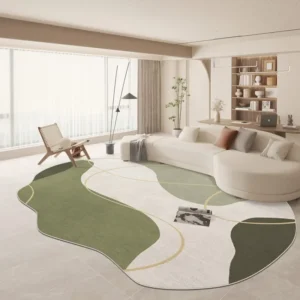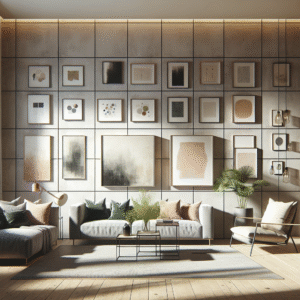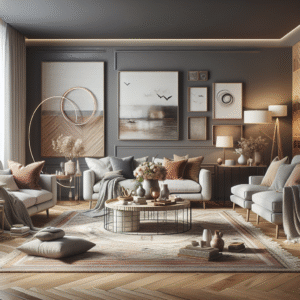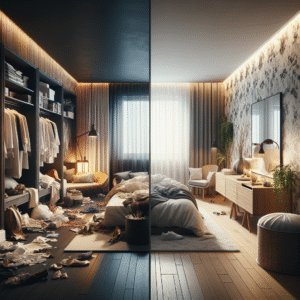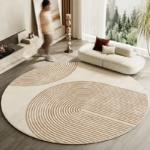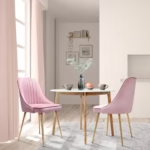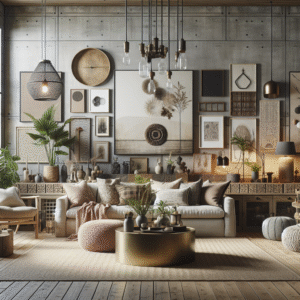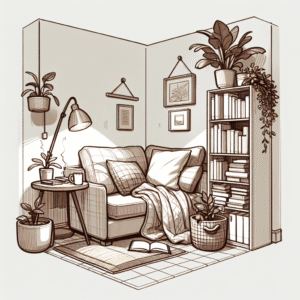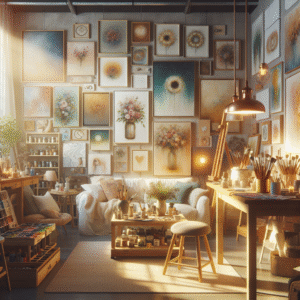Elevate Your Style: Art Placement Strategies for Spaces with Low Ceilings
Low ceilings can often leave anyone feeling cramped and uninspired. However, with the right art placement strategies, these spaces can be transformed into inviting havens that feel open and stylish. In this guide, you’ll discover how to elevate your atmosphere, learn clever techniques for art placement, and create visual interest that captivates any room.
Whether you’re working with a cozy apartment or a compact office, you’re about to unlock the secrets to maximizing your space visually. We’ll explore actionable insights, including tips on selecting the right art pieces, clever grouping strategies, and practical advice to make your low-ceiling spaces feel expansive and inviting.
Here’s what to expect in this article:
- Understanding the challenges of low ceilings
- Choosing the right art styles and sizes
- Creative placement techniques
- Case studies demonstrating successful transformations
- FAQs on art placement strategies
- Conclusion and actionable next steps
Understanding the Challenges of Low Ceilings
Before diving into solutions, let’s understand why low ceilings can pose a problem for art placement:
- Visual Compression: Low ceilings can create a sense of confinement.
- Limited Wall Space: With less verticality, wall surfaces may seem smaller.
- Lighting Constraints: Height limitations often affect how light interacts with your space.
These challenges can make it difficult to create a breath-taking focal point. However, by understanding them, you’re already on the path to creatively overcoming these hurdles.
Choosing the Right Art Styles and Sizes
Art Styles That Lift the Room
When selecting art, consider styles that evoke a sense of elevation and openness. Tall, vertical pieces can draw the eye upward, enhancing the perception of height.
Size Matters: Finding the Right Scale
Opt for art that suits your space:
- Large Statement Pieces: These can serve as a focal point.
- Gallery Walls: Create a collage of smaller pieces to add depth.
- Mirrors: Combining artwork with mirrors can enhance perception of space.
Creative Placement Techniques
Vertical Arrangements
By arranging art vertically, you can make walls feel taller. One effective method is:
- Select a large piece to anchor the arrangement at eye level.
- Layer smaller pieces above and below, maintaining a consistent spacing.
Layering and Overlapping
Layering works beautifully in low spaces. Consider the following:
- Place a smaller artwork partially overlapping a larger one.
- Use frames of varying textures and colors to add dimension.
Case Studies: Successful Transformations
Urban Loft
In a recent case, an urban loft with an 8-foot ceiling was transformed using a mix of vertical and large-scale artworks that immediately drew the eye upward, creating an illusion of height.
Corporate Office
A corporate office with low ceilings utilized a gallery wall approach with motivational quotes and abstract art to create an inspiring workspace that felt both spacious and dynamic.
FAQs on Art Placement Strategies
What is the best way to use art in a low-ceiling space?
Maximize vertical space by using tall pieces or creating a gallery wall that draws the eye upward, making the room feel taller.
How can I choose the right size art for my space?
Opt for large statement pieces for walls, or create clusters of smaller pieces. Ensure a balance between the scale of your art and the room size.
Can mirrors be considered art?
Absolutely! Mirrors can reflect light and create a sense of depth, making them a stylish addition to low-ceiling spaces.
What placement style is best for small spaces?
Layering and clustering art works best in small spaces, allowing for a more intricate and engaging visual experience.
Conclusion and Next Steps
Incorporating art into low-ceiling spaces doesn’t have to be a challenge. By selecting the right styles and utilizing creative placement techniques, you can dramatically transform your environment. Remember the key takeaways:
- Use vertical arrangements to enhance the perception of height.
- Select appropriate art sizes that complement your space.
- Be adventurous with layering and overlapping techniques.
Ready to elevate your space? Start experimenting with your art today and watch your rooms come to life!
Content Disclaimer
Information provided for educational purposes. Not professional advice; consult experts for your unique situation.
Categories
- Accent Walls & Ceilings (15)
- Art Curation & Gallery (30)
- Bedding Style Trends (42)
- Bedroom Makeover (35)
- Bohemian & Eclectic Styles (15)
- DIY & Budget-Friendly Decor (14)
- Eco-Friendly Design (16)
- Furniture Care (34)
- Home Decor & Design Ideas (103)
- Home Wellness Spaces (15)
- Integrated Outdoor Living (14)
- Kids and Nursery Decor (15)
- Living Room Decor (35)
- Minimalist & Japandi Style (18)
- Mix & Match Techniques (34)
- Modern & Contemporary Design (14)
- Rug Sizing & Placement (34)
- Seasonal Home Decor (37)
- Small Space Solutions (19)
- Wall Art & Painting Tips (37)
Recent Posts
Recent Comments
Archives
Product Gallery
-
 Large Area Green Rugs for Bedroom Nordic Living Room Decoration Shaped Carpet Irregular Plush Lounge Rug Home Thick Washable Mat Rated 5.00 out of 5$57.07 – $359.83Price range: $57.07 through $359.83
Large Area Green Rugs for Bedroom Nordic Living Room Decoration Shaped Carpet Irregular Plush Lounge Rug Home Thick Washable Mat Rated 5.00 out of 5$57.07 – $359.83Price range: $57.07 through $359.83 -
 Nordic Style Rugs for Bedroom Morandi Living Room Decoration Carpet Large Area Geometry Lounge Rug Home Cloakroom Non-slip Mat Rated 5.00 out of 5$40.98 – $620.81Price range: $40.98 through $620.81
Nordic Style Rugs for Bedroom Morandi Living Room Decoration Carpet Large Area Geometry Lounge Rug Home Cloakroom Non-slip Mat Rated 5.00 out of 5$40.98 – $620.81Price range: $40.98 through $620.81 -
 Irregular Shapes Living Room Decoration Carpet Modern Style Rugs for Bedroom Home Thicken Plush Rug Fluffy Soft Lounge Floor Mat Rated 4.75 out of 5$58.00 – $360.83Price range: $58.00 through $360.83
Irregular Shapes Living Room Decoration Carpet Modern Style Rugs for Bedroom Home Thicken Plush Rug Fluffy Soft Lounge Floor Mat Rated 4.75 out of 5$58.00 – $360.83Price range: $58.00 through $360.83





